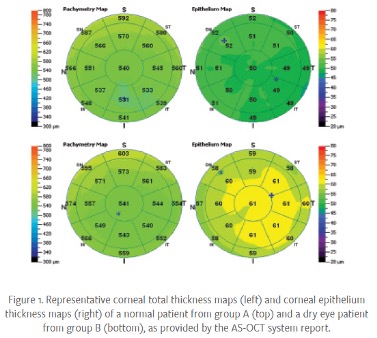Optical coherence tomography (OCT) corneal epithelial mapping is a new diagnostic tool with high sensitivity (86.4%) and specificity (91.7%) for screening and staging dry eye disease (DED) reliably and in a less invasive manner than the battery of tests in current practice.
The best marker for diagnosing DED using OCT is superior intermediate epithelial thickness (binormal estimated area under the receiver operating characteristic curve, 0.87; best cut off thickness, 50 um). The best marker for grading DED severity is the difference between the inferior and the superior peripheral zones (analysis of variance, P=0.009)
In the case of dry eye, there are likely cell turnover irregularities due to both mechanical and inflammatory factors, which may result in reduced epithelial thickness. If the cells are stressed for some reason, the tissue will likely be mild to moderately atypical, thus, detecting any new sign of a disease, particularly for a disease that is relatively common, is important, which makes OCT corneal mapping for DED a newer aid in future.

